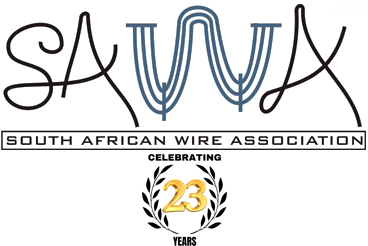Link Chains
Definition
A technical chain is a flexible assembly of connected pieces called links, mostly made of steel or other metals. Such products are generally used to handle mechanical loads or forces. The two basic classification designs are round link chains (e.g. ship anchor chains) and roller chains (e.g. bicycle chains).
Today, chains are virtually everywhere in multiple fields, including industry, agriculture, mining, and other sectors. Thus, they usually have to meet high technological demands.
History
The history of metallic chains dates back to at least 2500 BC. Chains made of gold or silver were worn as jewelry or ornaments. Over time, chains made of copper, bronze, and iron were used to draw water buckets up from a well, hang up kettles, restrain prisoners and slaves, or fasten ship anchors.
A bucket-elevator based on a chain was designed by the Roman architect and engineer Marcus Vitruvius Pollio in the 1st century BC. Soldiers in Roman times and later knights in the Middle Ages used meshes made of chain links as body protection in combat. Later in time, the manufacture of chain mails became a major handicraft sector. For example, it has been a driving factor for the progressive transformation of medieval Nuremberg into one of the centers of the wire and metal processing industry in Germany.
From the beginning of their production until the late modern era, chains made of bronze or iron could only be manufactured through forging processes. With the 19th-century progressive industrialization, chains became increasingly important as production possibilities became more and more cost-effective and the number of applications grew.
The development of mining, steel making, and other production techniques, the appearance of the first machines, and the increasing demand for new machine elements further supported the development of chain design and manufacture. Modern technology and life are unthinkable without chains.
Technical applications
Round link chains usually consist of round or oval wire rings. They are mainly used to lift, move, hold, and secure loads. Roller chains are mostly employed as drive chains to transmit power or as conveyor chains in conveyor systems.
Chain mails – which consist of wire rings linked together in a pattern to form a mesh – are used to protect, among others, the tires of vehicles used in quarries, in mining, for demolition works, and in garbage and slag heaps. Traction-improving snow chains and avalanche protection chains also belong to this category of chain products.
Round link chains are also found in architecture—for example at the entrance of buildings, where they guide rainwater to the ground and give icicles a hold.
When it comes to bridge construction, chains are rarely used as a structural element.
However, the suspension bridge in the Hungarian capital Budapest is a spectacular example of chains’ versatility. The core elements of the infrastructure are the two supporting pillars: a pair of large-shaped chains passes through each pillar and supports the roadways. The building bears the appropriate name "Chain Bridge".
Other applications
In many countries, during ceremonial occasions, officials such as first mayors wear a so-called chain of office. Usually made of gold, this particular garment is an insignia of their office. This tradition seems to have its roots in the Europe of the Middle Ages.
Manufacture
Most technical chains are made from steel. Depending on the chain size, the starting material of a round link chain is a wire rod or coiled wire.
Round link chain: after cleaning, the rod or wire is straightened, drawn until reaching the required diameter, and fed into a forming machine. Before cutting the wire into the desired length, a quality grade and a trace code are marked on its surface. Each piece is then formed into a chain link and interconnected with the previously formed link. Step by step, the links create the final chain. A welding machine joins the edges of each link together and trims the excess material. Then, the chain is strength-tested and calibrated to ensure a consistent link length. Samples are cut out to monitor the welding seam quality and the mechanical properties of the chain. To obtain certain physical properties, some chains may undergo heat and/or surface treatments such as shot blasting, hot-dip galvanizing, zinc plating, or special coating. The finished chain is packaged and ready to be assembled with other products or for shipping. Usually, the chain ends are combined with hooks or other objects.
Roller chain: in most cases, these chains are designed to mesh with the teeth of sprockets and are mostly used as drive chains to transmit power or as conveyor chains to transport products throughout manufacturing facilities. A bicycle chain, for example, transmits kinetic energy from the pedals to the drive-wheel, thus propelling it. A portable chain saw is equipped with a cutting chain which is used to saw wood. In particular, this type of roller chain has both the above-mentioned functions: to transmit mechanical power and to convey products, in this particular case wood chips. In comparison with a round link chain, a roller chain is more complex as a larger number of components is necessary. Moreover, a roller chain has an application-specific design. Depending on the final use, the design possibilities are virtually unlimited. The roller chain manufacturing process involves multiple steps, as the different elements must meet precise dimensional requirements and be straight, smooth, and burr-free. For example, the pins – a typical product of the wire industry – undergo precision grinding processes to ensure concentricity and smooth surfaces. Rollers and bushings are made from tubes with uniform wall thickness and concentricity for smooth travel. To obtain certain physical properties such as increased strength, durability, and wear resistance, roller chains undergo specific heat treatments such as case-hardening. The fatigue resistance can still be increased by generating compressive stress across the surface with shot peening processes. The final stage of the assembly process for a roller chain is the preloading process.
Konrad Dengler Dipl.-Ing. Konrad Dengler
expometals.net newsletter no. 41, 2021


